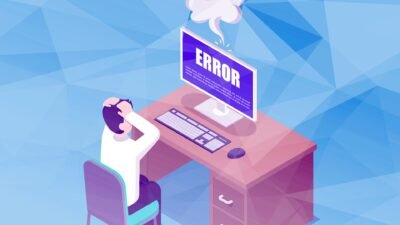Bitcoin Solo Mining: Unleashing the Power of Individual Effort

Bitcoin solo mining is a bold strategy where an individual miner works independently to validate Bitcoin blocks without joining a mining pool. This method allows the miner to claim the entire block reward, making it an appealing option for those ready to face the challenges head-on. This guide delves into the intricacies of Bitcoin solo mining and highlights why the Bitaxe solo miner stands out as the premier hardware for this endeavor.
What is Bitcoin Solo Mining?
Bitcoin solo mining involves using your own hardware to mine Bitcoin independently. Unlike pool mining, where rewards are shared among participants, solo miners keep the entire block reward if they successfully solve a block.
- Definition: Solo mining means working alone to solve blocks and earn rewards.
- Comparison with Pool Mining: Solo miners keep all rewards, unlike in pool mining where rewards are split.
- Historical Context: Solo mining was more common in Bitcoin’s early days due to lower network difficulty.
Advantages of Solo Mining
Solo mining offers several compelling benefits for individual miners.
- Full Control: Manage all aspects of your mining operation.
- No Fees: Avoid pool fees, which can reduce overall profits.
- Complete Rewards: Earn the entire block reward and transaction fees.
Challenges of Solo Mining
Despite its advantages, solo mining comes with notable challenges.
- High Volatility: Rewards are less predictable compared to pool mining.
- High Computational Power: Requires significant investment in top-tier hardware.
- Low Probability of Success: Lower chances of solving blocks due to high network difficulty.
Hardware Requirements for Solo Mining
Effective solo mining requires powerful and efficient hardware.
- ASIC Miners: Application-Specific Integrated Circuits are essential for efficient Bitcoin mining.
- Bitaxe Ultra and Supra:
- Bitaxe Ultra: Features the BM1366 ASIC chip, known for its efficiency.
- Bitaxe Supra: Equipped with the BM1368 ASIC chip, offering superior performance.
Energy Efficiency:
While many use older devices like the Antminer S9 for solo mining, these can be costly in electricity. The Bitaxe, with its single-chip design and 15W power draw, is an energy-efficient alternative that won’t significantly impact your electricity bill. This makes Bitaxe the best solo mining hardware, ideal for cost-effective and efficient solo mining.
Step-by-Step Guide to Solo Mining with Bitaxe
Here’s how to set up and optimize a Bitaxe miner for solo mining.
- Unboxing and Setup: Handle the miner with care and ensure a clean, dry setup environment.
- Installing AxeOS: Download and install firmware from the Bitaxe GitHub repository.
- Network Configuration: Connect to Wi-Fi and configure the miner using the AxeOS web interface.
Optimizing Your Solo Mining Setup
To achieve optimal performance, it’s essential to fine-tune your solo mining setup.
- Adjust ASIC Settings: Use AxeOS to optimize settings for efficiency.
- Effective Cooling: Ensure proper ventilation and consider additional cooling solutions.
- Regular Monitoring: Keep track of hash rate, power consumption, and temperature.
Real-World Success Stories
Notable Achievements
Several solo miners have successfully found blocks, earning substantial rewards. For example, a solo miner using Solo CK Pool recently solved a block and received 6.25 BTC, worth approximately $200,000 at the time. These success stories illustrate the potential of solo mining.
Strategies for Success
High-Performance Hardware: Using top-tier ASIC miners like Bitaxe Ultra and Supra is crucial. These miners feature the latest ASIC chips, providing high efficiency and performance.
Optimal Setup: Ensure your mining hardware is in a well-ventilated, cool environment. Utilize tools like AxeOS for real-time monitoring and configuration.
Network Stability: A stable, fast internet connection minimizes latency, enhancing mining performance.
Lessons Learned
Persistence Pays Off: Successful solo miners stress the importance of persistence. The high volatility and reward uncertainty mean consistent effort is key.
Cost Management: Keep operational costs low, particularly electricity. Energy-efficient hardware and optimized power settings are essential.
Community and Resources: Engage with the solo mining community for insights and support. Learning from others’ experiences can be highly beneficial.
Conclusion
Bitcoin solo mining can be highly rewarding but comes with significant challenges. The Bitaxe Ultra and Supra miners are top choices for those embarking on this solo journey. With high efficiency, advanced features, and the power of open-source innovation, Bitaxe miners provide the tools needed to succeed in solo mining.
By following this comprehensive guide and optimizing your setup, you can maximize your chances of striking gold with Bitcoin solo mining. Whether you’re a seasoned miner or new to the game, the potential rewards of solo mining with Bitaxe are worth the effort.
FAQs about Bitcoin Solo Mining
What is Bitcoin solo mining?
Bitcoin solo mining is when an individual uses their own hardware to mine Bitcoin independently, without joining a pool.
How does Bitcoin solo mining work?
It involves solving cryptographic puzzles using mining hardware. Successful miners add blocks to the blockchain and earn rewards.
What are the chances of finding a block as a solo miner?
The probability depends on hash rate and network difficulty. Generally, it is lower compared to pool mining.
How much does it cost to start solo mining?
Costs include high-performance ASIC miners like Bitaxe, electricity, and maintenance.
Can solo mining be profitable?
Yes, but it depends on Bitcoin’s price, mining difficulty, and operational costs.
What hardware do I need for solo mining?
High-performance ASIC miners like Bitaxe Ultra and Supra are ideal.
How do I set up a Bitaxe miner for solo mining?
Unbox carefully, install AxeOS, configure network settings, and start mining.
What are the risks of solo mining?
High variance in rewards, significant initial investment, market volatility, and increased difficulty.
Are there any success stories of solo miners?
Yes, some solo miners have successfully found blocks, demonstrating the potential rewards.
How do I optimize my solo mining setup?
Use efficient hardware, ensure proper cooling, monitor performance, and keep software updated.
Alexia is the author at Research Snipers covering all technology news including Google, Apple, Android, Xiaomi, Huawei, Samsung News, and More.











